Renault Mégane vs SsangYong Korando – Performance, range & efficiency compared
Compare performance, boot capacity, efficiency and price at a glance.
Find out which car is the better choice for you – Renault Mégane or SsangYong Korando?
Costs and Efficiency: Price and efficiency are often the first things buyers look at. Here it becomes clear which model has the long-term edge – whether at the pump, the plug, or in purchase price.
SsangYong Korando has a distinct advantage in terms of price – it starts at 27000 £, while the Renault Mégane costs 35100 £. That’s a price difference of around 8066 £.
In terms of energy consumption, the advantage goes to the Renault Mégane: with 15.40 kWh per 100 km, it’s hardly perceptible more efficient than the SsangYong Korando with 16.80 kWh. That’s a difference of about 1.40 kWh.
As for range, the Renault Mégane performs clearly perceptible better – achieving up to 452 km, about 113 km more than the SsangYong Korando.
Engine and Performance: Under the bonnet, it becomes clear which model is tuned for sportiness and which one takes the lead when you hit the accelerator.
When it comes to engine power, the Renault Mégane has a somewhat edge – offering 218 HP compared to 190 HP. That’s roughly 28 HP more horsepower.
In acceleration from 0 to 100 km/h, the Renault Mégane is a bit quicker – completing the sprint in 7.40 s, while the SsangYong Korando takes 8.40 s. That’s about 1 s faster.
In terms of top speed, the SsangYong Korando performs to a small extent better – reaching 191 km/h, while the Renault Mégane tops out at 160 km/h. The difference is around 31 km/h.
There’s also a difference in torque: SsangYong Korando pulls slightly stronger with 360 Nm compared to 300 Nm. That’s about 60 Nm difference.
Space and Everyday Use: Whether family car or daily driver – which one offers more room, flexibility and comfort?
Both vehicles offer seating for 5 people.
In curb weight, SsangYong Korando is slightly lighter – 1517 kg compared to 1719 kg. The difference is around 202 kg.
In terms of boot space, the SsangYong Korando offers clearly perceptible more room – 551 L compared to 389 L. That’s a difference of about 162 L.
In maximum load capacity, the Renault Mégane performs barely noticeable better – up to 1332 L, which is about 84 L more than the SsangYong Korando.
When it comes to payload, SsangYong Korando barely noticeable takes the win – 463 kg compared to 446 kg. That’s a difference of about 17 kg.
Who wins the race?
The SsangYong Korando proves to be edges ahead and therefore becomes our DriveDuel Champion!
SsangYong Korando is the better all-rounder in this comparison.
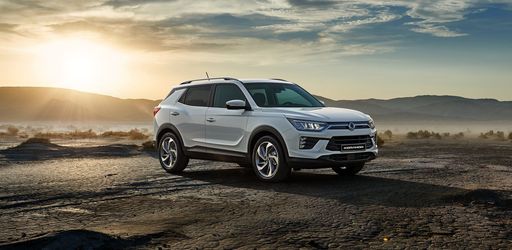
SsangYong Korando
Renault Mégane
The Renault Mégane stands out in the hatchback segment with its chic design and advanced technology features. Its interior offers a spacious and comfortable environment, providing both driver and passengers with a premium experience. Combining impressive handling with economical efficiency, the Mégane caters to those seeking style and practicality in their daily commute.
details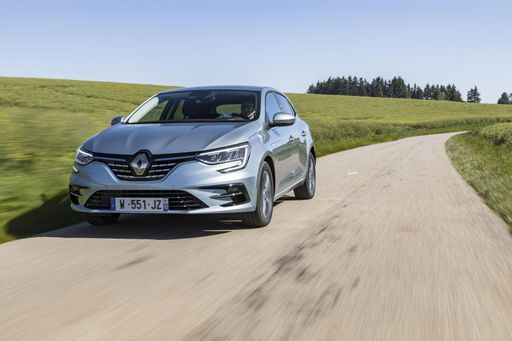 @ Renault
@ Renault
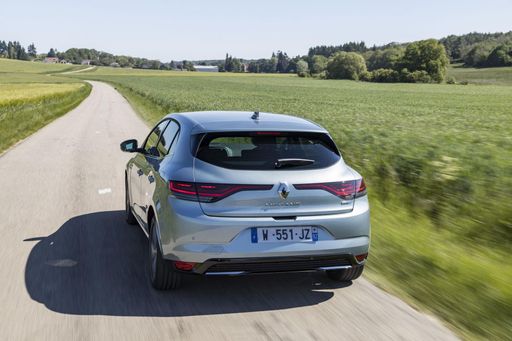 @ Renault
@ Renault
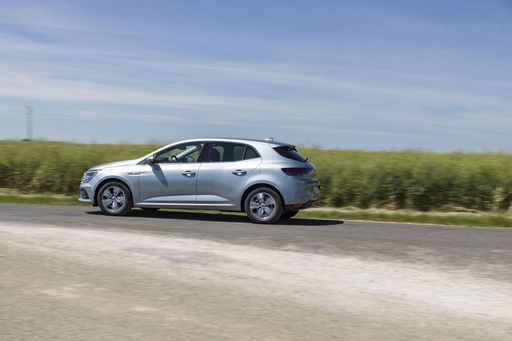 @ Renault
@ Renault
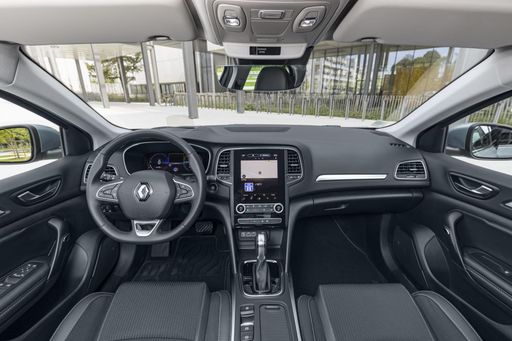 @ Renault
@ Renault
 @ Renault
@ Renault
SsangYong Korando
The SsangYong Korando offers a blend of contemporary design and practicality, making it an appealing choice for urban adventurers. Its spacious interior and comfortable seating ensure a pleasant driving experience for both driver and passengers. With its reliable performance and advanced features, the Korando stands out in the competitive SUV market.
details @ Ssangyong
@ Ssangyong
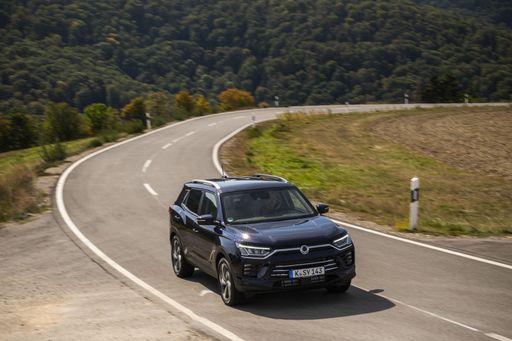 @ Ssangyong
@ Ssangyong
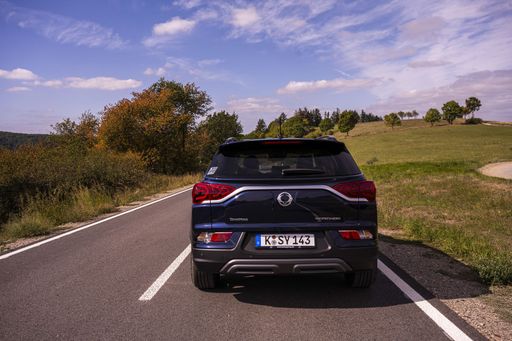 @ Ssangyong
@ Ssangyong
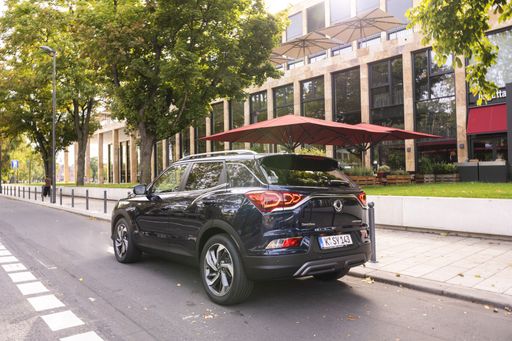 @ Ssangyong
@ Ssangyong
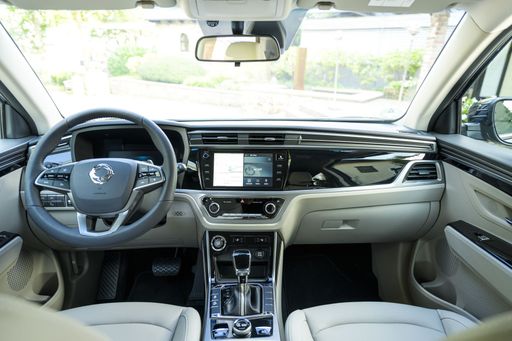 @ Ssangyong
@ Ssangyong

|

|
|
|
|
Costs and Consumption |
|
|---|---|
|
Price
35100 - 38500 £
|
Price
27000 - 42000 £
|
|
Consumption L/100km
-
|
Consumption L/100km
7.5 - 8.6 L
|
|
Consumption kWh/100km
15.40 kWh
|
Consumption kWh/100km
16.80 kWh
|
|
Electric Range
452 km
|
Electric Range
339 km
|
|
Battery Capacity
-
|
Battery Capacity
-
|
|
co2
0 g/km
|
co2
0 - 197 g/km
|
|
Fuel tank capacity
-
|
Fuel tank capacity
50 L
|
Dimensions and Body |
|
|---|---|
|
Body Type
SUV
|
Body Type
SUV
|
|
Seats
5
|
Seats
5
|
|
Doors
5
|
Doors
5
|
|
Curb weight
1719 kg
|
Curb weight
1517 - 1840 kg
|
|
Trunk capacity
389 L
|
Trunk capacity
551 L
|
|
Length
4200 mm
|
Length
4450 - 4465 mm
|
|
Width
1783 mm
|
Width
1870 mm
|
|
Height
1505 mm
|
Height
1620 - 1645 mm
|
|
Max trunk capacity
1332 L
|
Max trunk capacity
1248 L
|
|
Payload
446 kg
|
Payload
410 - 463 kg
|
Engine and Performance |
|
|---|---|
|
Engine Type
Electric
|
Engine Type
Petrol, Electric
|
|
Transmission
Automatic
|
Transmission
Manuel, Automatic
|
|
Transmission Detail
Reduction Gearbox
|
Transmission Detail
Manual Gearbox, Automatic Gearbox, Reduction Gearbox
|
|
Drive Type
Front-Wheel Drive
|
Drive Type
Front-Wheel Drive, All-Wheel Drive
|
|
Power HP
218 HP
|
Power HP
163 - 190 HP
|
|
Acceleration 0-100km/h
7.40 s
|
Acceleration 0-100km/h
8.40 s
|
|
Max Speed
160 km/h
|
Max Speed
156 - 191 km/h
|
|
Torque
300 Nm
|
Torque
260 - 360 Nm
|
|
Number of Cylinders
-
|
Number of Cylinders
4
|
|
Power kW
160 kW
|
Power kW
120 - 140 kW
|
|
Engine capacity
-
|
Engine capacity
1497 cm3
|
General |
|
|---|---|
|
Model Year
2025
|
Model Year
2021 - 2023
|
|
CO2 Efficiency Class
A
|
CO2 Efficiency Class
F, G, A
|
|
Brand
Renault
|
Brand
SsangYong
|
What drive types are available for the Renault Mégane?
Available configurations include Front-Wheel Drive.
The prices and data displayed are estimates based on German list prices and may vary by country. This information is not legally binding.
